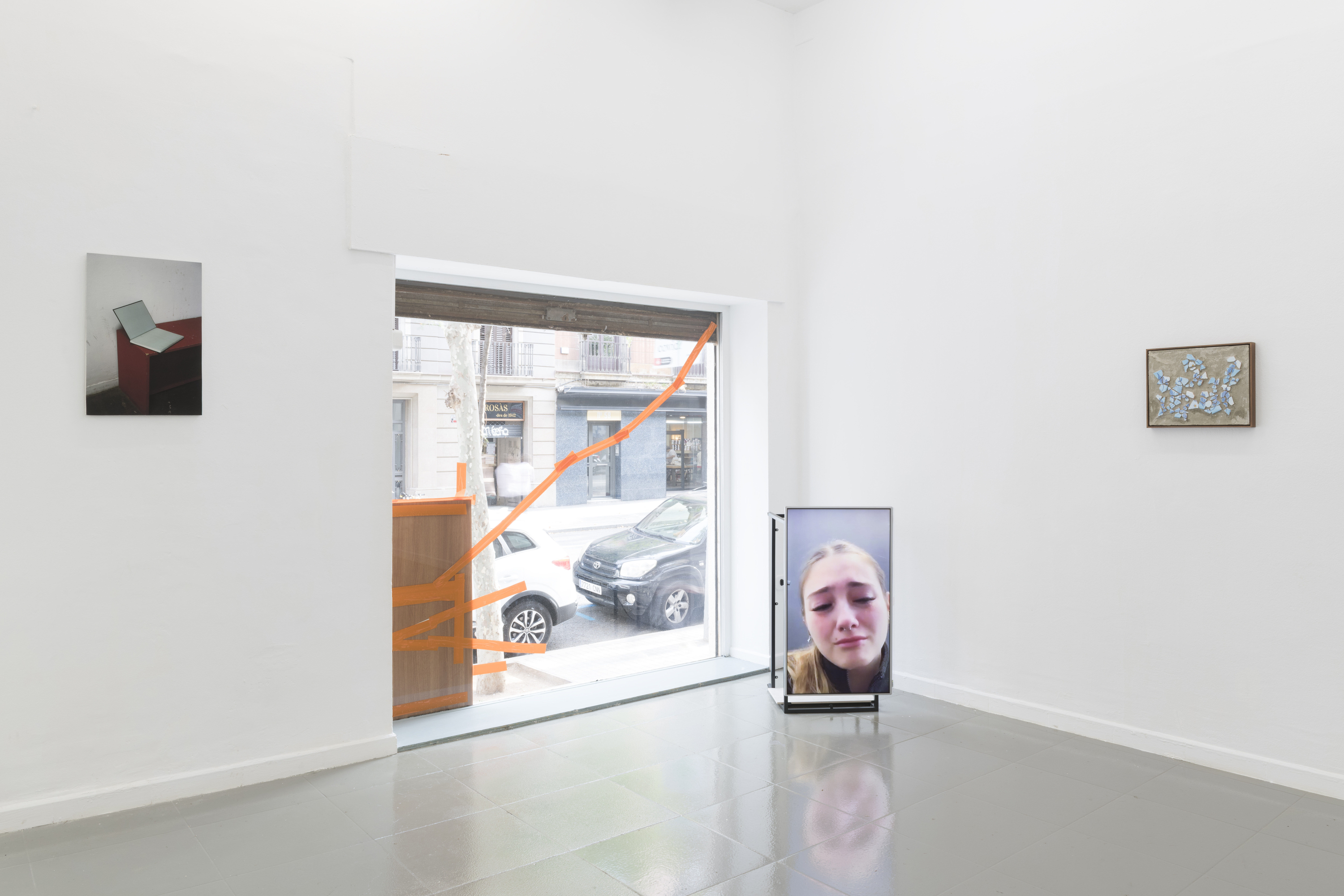 Las Palabras Azules, 2021
Las Palabras Azules, 2021Pas une orange, Barcelona
 Las Palabras Azules, 2021
Las Palabras Azules, 2021Pas une orange, Barcelona
 Las Palabras Azules, 2021
Las Palabras Azules, 2021Pas une orange, Barcelona
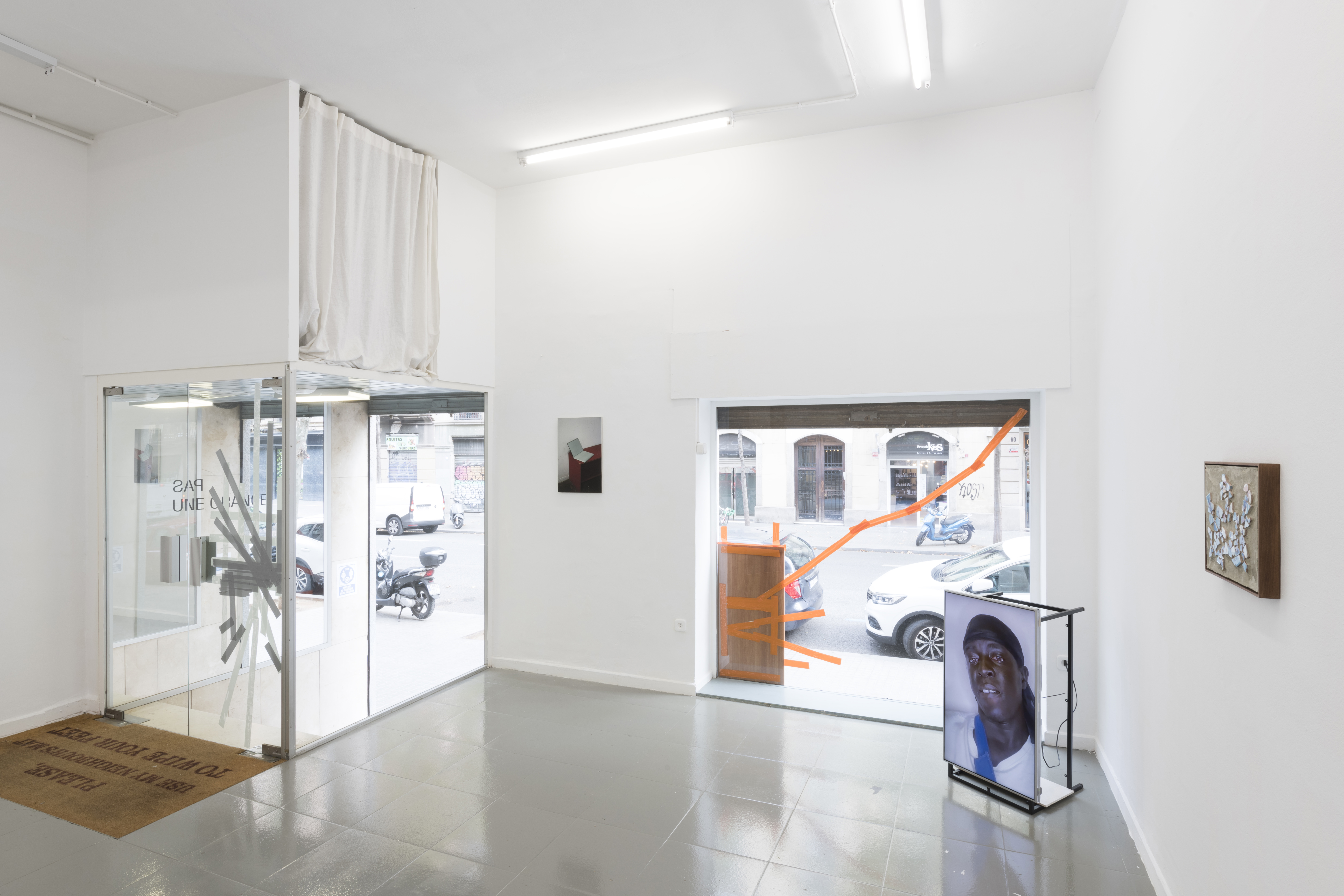 Las Palabras Azules, 2021
Las Palabras Azules, 2021Pas une orange, Barcelona
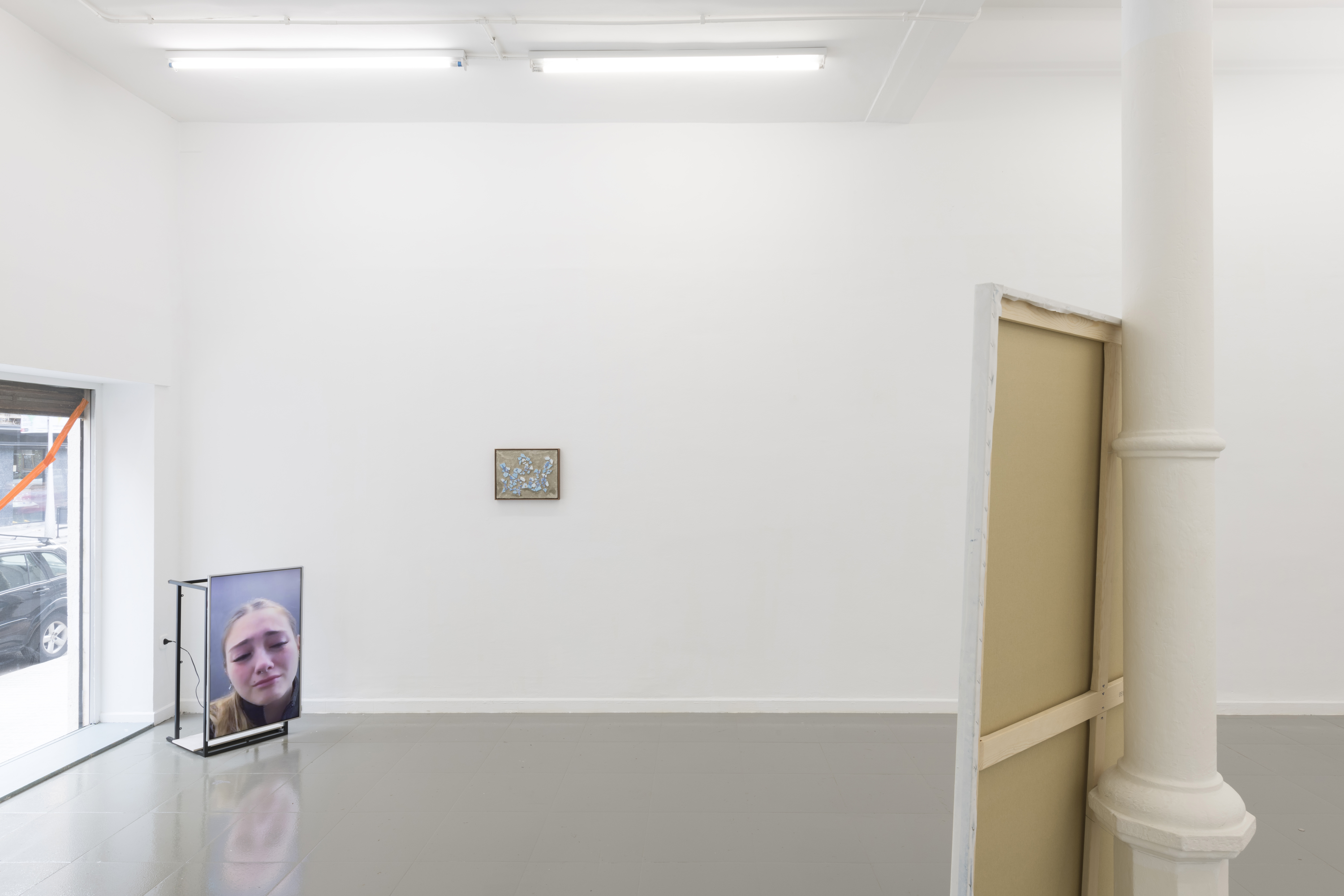 Las Palabras Azules, 2021
Las Palabras Azules, 2021Pas une orange, Barcelona
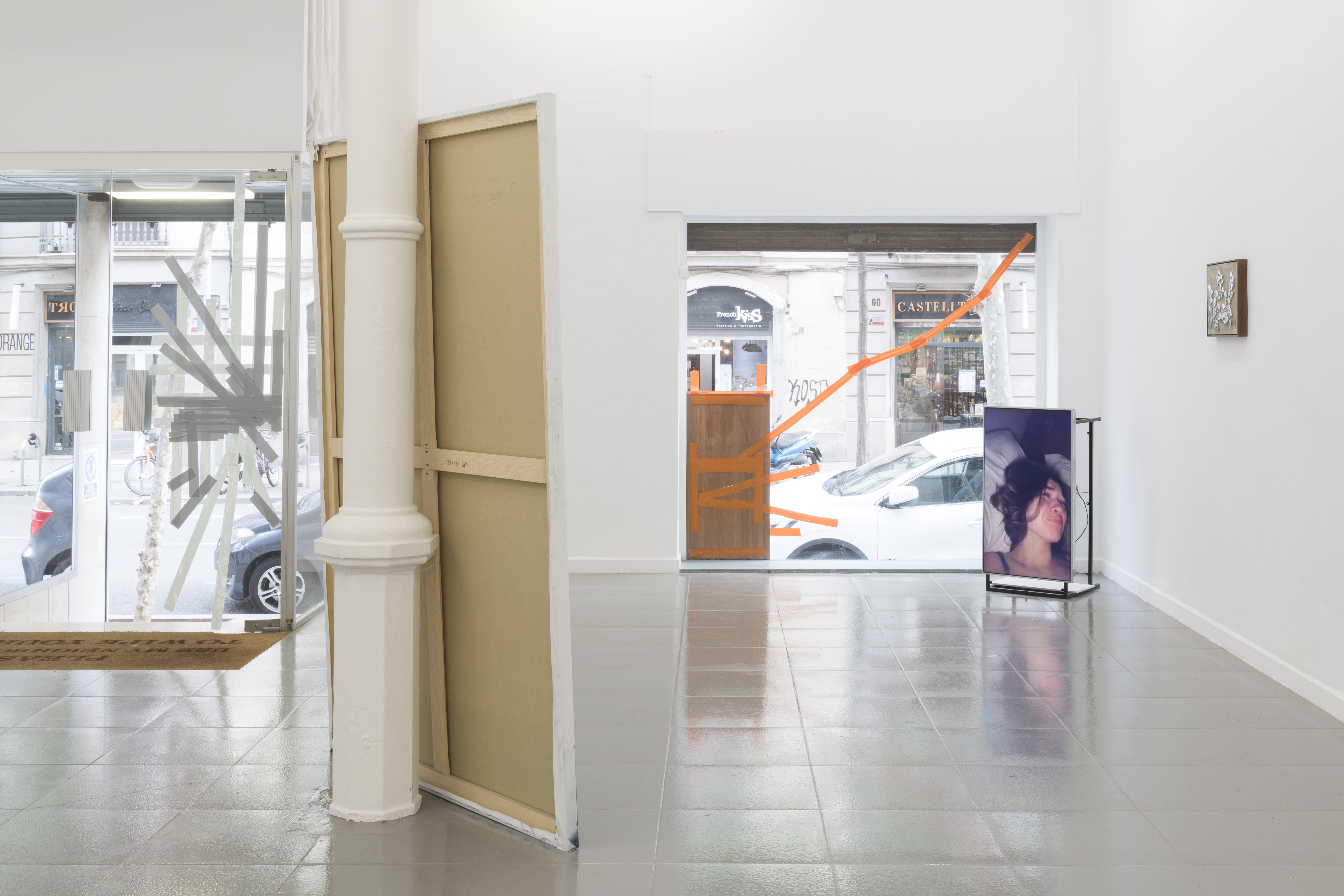 Las Palabras Azules, 2021
Las Palabras Azules, 2021Pas une orange, Barcelona
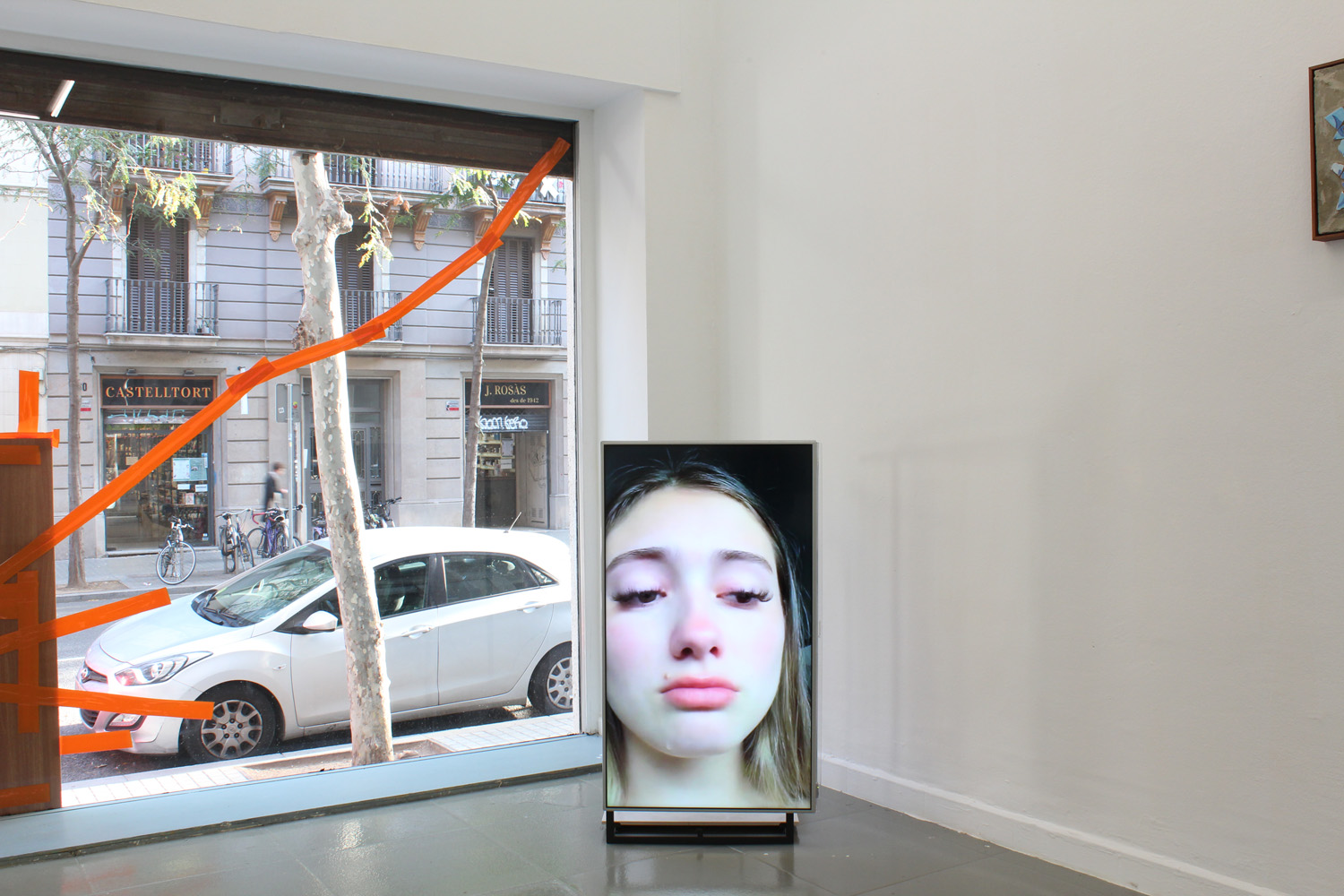 Las Palabras Azules, 2021
Las Palabras Azules, 2021Pas une orange, Barcelona
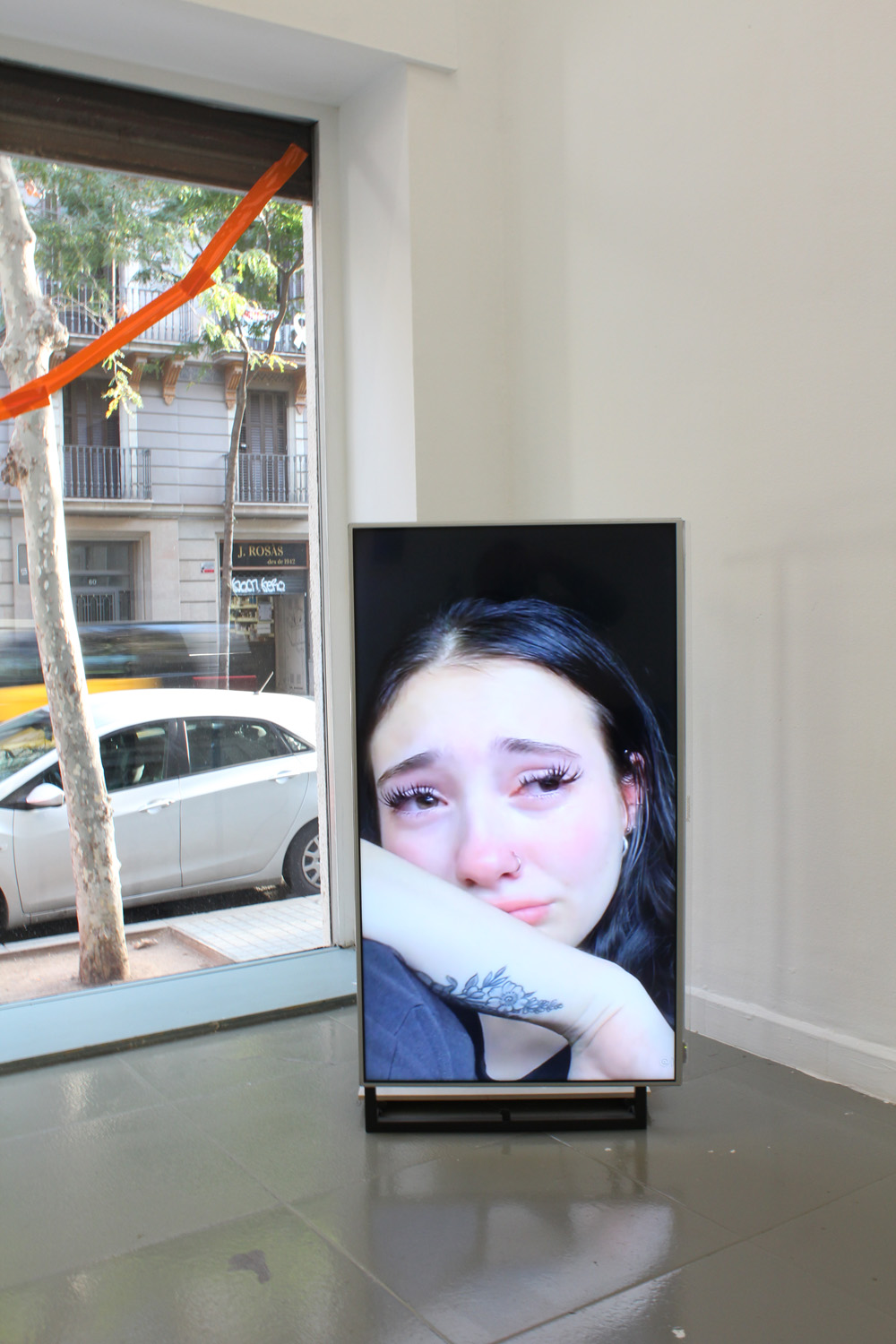 Antoine Donzeaud, PAIN 1 2 3 4 (first edit), 2021
Antoine Donzeaud, PAIN 1 2 3 4 (first edit), 2021HD video, sound
2'29''
Inquire
 Antoine Donzeaud, PAIN 1 2 3 4 (first edit), 2021
Antoine Donzeaud, PAIN 1 2 3 4 (first edit), 2021HD video, sound
2'29''
Inquire
HD video, sound
2'29''
Inquire
Las Palabras Azules uses exhibition’s fiction to establish narrative relationships between works that share a dramatic twist. This way, each of the pieces selected for this exhibition - from contention to exasperation - are understood as stories that expand and are enhanced through different media. A project that deals with the exercise of looking twice, feeling twice, contradicting and reaffirming oneself.
Upon entering the room - or the stage -, the conflict of the work appears almost immediately. As in a choral of comedies, a large part of the works come together, as if looking at each other, in a kind of discussion between images. We appear in the tumult at a critical moment, a moment of rupture, of change. Here, Antoine Donzeaud’s work seems to have the floor, or rather to retain it. The exasperated crying, pretended and exposed - from a supposed intimacy - is placed face to face with one of María Tinaut's works, Gaining Here Is Losing There (The Chance), wanting to capture the attention of the scene. The corporeality that the canvas engenders, placed, as if waiting for its turn, contained, elegant, neat, harbors a decisive and blunt message: "there is no chance of love without the threat of loss." The viscerality here is different, like a kind of knife that does not leave a mark, but still opens wounds or, on the contrary, can calm them. Impassive and observant, stable and delicate, Estefanía Landesmann’s FIG 7 and Tinaut’s Untitled (Blue 2) are also part of the scene.
With Nico Müller and his Reconstructed tape compositions, this collective dialogue of visual gestures - the words we say with our eyes - seems to be completed. These interventions are located at that intermediate point between the explosion and the accumulated tension that begins to crack the body, space and objects.
In another scene, in another act, we find works far removed from the main conflict, as sustained in time; together, brooding and symbolic. They do not belong to the present moment, they keep their attention on something that is born of the earthly but that becomes metaphysical. In this stage, Julia Santa-Olalla’s Lechuza rises all-knowing, naturally and cleanly.
The protagonists of this act pass the baton, do not interrupt, breathe and become light, haughty and flying. They look askance at the drama, but it doesn't affect them. The symbolism of some of them weighs on the space although their size is smaller than all the others, almost going unnoticed. Nico Müller’s Constellation (Minerva) composes a heaven on the ground, from the simplicity, the everyday, the chance and the subtlety of what appear to be simple coins. Intervened, what remains of each one of them speaks to us from unity and collectivity, like the celestial map to which they refer.
A painting by María Tinaut appears again with An Archipelago of Past Tense, looking at the back of Gaining Here Is Losing There (The Chance). On the same diagonal, although they present a certain similarity in size and color, the shades cut through any type of intention to compare or put them together. Starting from the rescaling of an A4 sheet, María invites us to pay attention to all these images that seem ambiguous and insignificant, stretching their power and scope from the approach of the painting as a container of actions, stories and events: “layers of white painting and accidental and deliberate marks cover, hide and reveal at the same time how this painting was gestate. […] The marks disappear and reappear on a white background made up of translucent layers of action and reaction, action and inaction that build a state of aim and permanent present ”.
At her right, FIG. 13 hooks our gaze again with a refined game of aesthetic deception, visual and compositional. The book appears again, in this case present by indirect reference only. In this trompe l'oeil, the idea of the container of knowledge, together with Constellation (Minerva) and Lechuza, envelops us in an environment dedicated to thought and introspection, as opposed to the first act or scene dedicated to the body and excitement.
As a kind of epilogue, we find what seems to promise us a rest with an air of hope and wonder. Behind the stage, Alice Dos Reis invites us to stay and relieve tensions from the color, dance and dynamism of Stan Rehearsal - Ensaio for Plataforma de Lançamento. The video appears hanging as if it was a canvas, as if that was the correct way to store a succession of frames. The approach seems simple; a group of teenagers find themselves by chance in the area of a rocket launch. After filming it, they go into formation to record themselves in what looks like a dance and music video for social media as the rocket drifts away from them and the earth at the same time. A micro story that reconnects us with the beginning of our journey, from the antagonistic, away from those lonely, sad and moaning young people.
– Eladio Aguilera